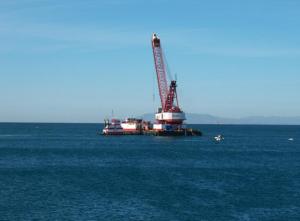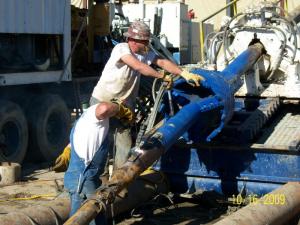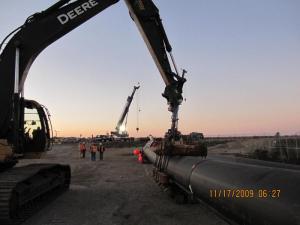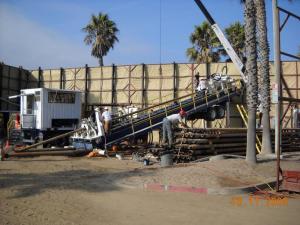Outfall contractor experienced in ocean drilling

Rehoboth Beach officials have awarded contracts for the city’s $52.5 million ocean outfall project, and contractors are set to begin mobilizing on Sunday, Oct.1.
The project has long drawn criticism, but officials in Ventura County, Calif., know something about where Rehoboth is headed. They oversaw a similar project in 2010 with the same contractor, Manson Construction of Seattle, and it gives a glimpse of what Rehoboth has in store.
In 2010, Manson built an outfall pipe into the ocean, a mile offshore near the town of Port Hueneme. Located 63 miles from Los Angeles, the Port Hueneme outfall is not a wastewater outfall, like Rehoboth’s. Managed by the Calleguas Municipal Water District, the outfall discharges salt water into the ocean.
Water District General Manager Susan Mulligan said the groundwater in the southern part of Ventura County is salty, which she said is mainly due to the arid climate. To get drinking water, groundwater is pumped out of the ground to a plant where salt is removed through reverse osmosis. As an example, Mulligan said if you have 10 gallons of water, after the reverse osmosis process, 8 gallons are desalted enough to drink, but 2 gallons will be too salty. Something has to be done with that salty water, she said; it cannot be discharged into a creek, and it cannot be used for irrigation.
The solution was to pump that water out to the ocean, which is already salty. The district built 40 miles of pipe from inland to the ocean. Mulligan said their pipe was laid underground and then under the ocean floor. At the end, the pipe emerges from the sand and a diffuser disperses the salty water. All told, the project took six months to construct at a cost of $15 million.
Rehoboth’s outfall will be similar, with the pipe leading from the city’s wastewater treatment plant and then under the ocean floor to a disposal site 6,000 feet off Deauville Beach. At the end of the pipe will be a diffuser dispersing the treated effluent into the ocean current.
Mulligan said in California, they directionally drilled from the land with another hole drilled in the ocean floor. A 36-inch diameter pipe was fused together on land, she said, and was floated out to the barge and then pulled through the hole from the ocean end back to land. Mulligan said during drilling, the hole is lined with clay that the drillers install as they drill.
“This method is also used when drilling a groundwater well to hold the hole open until you install a pipe in it,” she said. “Water gets into the hole, which doesn’t matter, because the goal is simply to keep sand from caving into the hole. Then you pull the pipe in and that holds the hole open.”
In Rehoboth, the pipe will be directionally drilled from the land. As in Rehoboth, Port Hueneme’s outfall was built in the winter, which Mulligan said drove up costs there.
“Definitely. It’s more expensive and more risky for the contractor,” she said. Southern California does not have snowy winters like the Mid-Atlantic – Mulligan said it doesn’t get much colder than 40 degrees – but rainstorms and big swells can still cause problems. She said no weather problems arose during outfall construction.
Some Rehoboth commissioners have raised concerns about Manson’s past work, but Mulligan said the firm was great to deal with. She said they came prepared, knew their stuff and finished on time.
Rehoboth’s project has long dealt with a perception problem about dumping treated effluent into the ocean. Mulligan said similar concerns arose with the Port Hueneme project.
“People were concerned that what we put out would make kids sick or kill marine life,” she said. “We hit hard on that issue at public meetings.”
Mulligan said the perception issue was also mitigated by public confidence in California’s regulatory climate, which is very strict. The main issues people worried about during construction were noise and the ugliness of the construction site itself.
Today, Mulligan said, people forget the outfall is even there, and there have been no issues with water quality. She said regulators check the outfall once a year to ensure it is in good working condition.
Ryan Mavity covers Milton and the court system. He is married to Rachel Swick Mavity and has two kids, Alex and Jane. Ryan started with the Cape Gazette all the way back in February 2007, previously covering the City of Rehoboth Beach. A native of Easton, Md. and graduate of Towson University, Ryan enjoys watching the Baltimore Ravens, Washington Capitals and Baltimore Orioles in his spare time.

























































